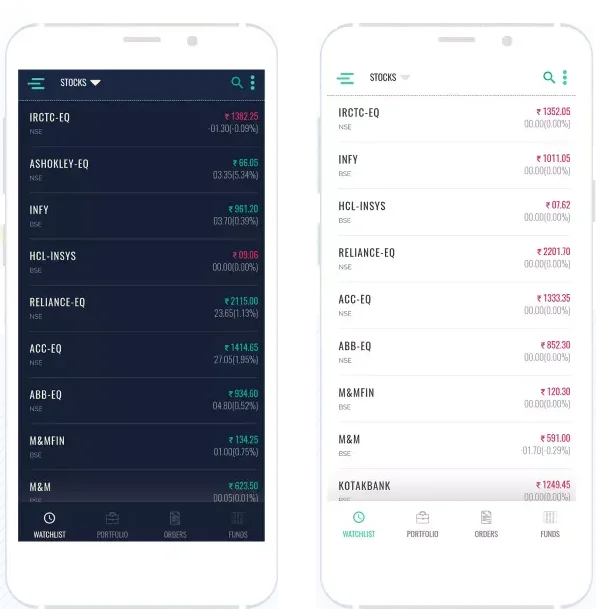Valuation

Meaning of valuation
Valuation is a process or method employed by which one quantifies the fair value of an asset. Fair value is the approximate worth of an asset and valuation is the process through which we arrive at the fair value. Fair value is also known as the intrinsic value of any asset. Understanding valuation is important to the entrepreneur, investor or employee because as the business grows the need to raise capital arises or there may be
Difference between price and value
“Price is what you pay; value is what you get” -Benjamin Graham
The above quote amply highlights the difference between price and value. Price is a determinant of demand and supply factors while value is the real worth of an asset. Demand and supply factors can be varied right from the emotional decision to personal needs. Price is fluctuating in nature and value is relatively stable.
Need for valuation
One should know the worth of the business he has invested into. The decision to continue in business or stay invested depends on the ability of a business to create value on a sustained basis. Any business functions and thrives in a dynamic environment. Therefore, one must understand that valuation is not a one-time affair it is a continuous process.
The following points will ensure the need for valuation clearly;
- Valuation provides a benchmark against a peer – A benchmark is required to know one’s standing concerning the peer group. This helps in understanding how a company is valued within an industry
- Corporate events and their impact on valuation- Any corporate events like a new product launch or an acquisition, hive-offs etc., affects the valuation of a company.
- Valuations are the starting point for price negotiation- In the case of mergers or acquisitions, it is easy to evaluate an offer when the valuation and its drivers are known.
Raising of capital become easy-When the worth of the business is known the capacity to raise capital also becomes clear. It becomes easier to plan business expansions and fund mergers & acquisitions.
Basis of valuation
Valuations depend on many factors. Typically, they depend on the company size, profitability, competitive edge, market share, growth rate etc.
- Size matters as a larger company will have a better capacity to absorb business or economic shocks than a smaller one.
- Profitability counts as higher the profitability higher is the valuation. However, in recent times we have seen that revenue alone can be enough for getting a good valuation. In revenue-based valuations, the sales or revenue is multiplied by X times to arrive at a valuation. If the revenue is Rs.1000 crore and the multiple is 2 then the valuation is 1000 X 2= Rs.2000 crore.
- Market share- a company with a higher market share will naturally command a better valuation.
- Competitive edge- competitive edge is the differentiator between one company from the other. An edge can be based on pricing or uniqueness in the product or services that are offered. This adds to the valuation.
- Future growth potential- The scope for expansion in product line or services both for the company and industry adds to the value.
Approaches to valuation
Typically, there are three approaches to the valuation of a business
- Cost-based approach- The valuation under this approach is based on the premise that instead of creating an asset why not buy it. The value of assets that remains after removing all the liabilities is the value of the business. It’s a very simplistic method. Also known as the net assets value (NAV) this approach uses either book value or the fair value of the assets.
This method is used to value companies that have substantial tangible assets in their books like real estate companies, infrastructure companies or holding companies.
| Particulars | Amt in lakhs | |
| Book value | Fair value | |
| Property, Plant and equipment | 1000 | 1200 |
| Current Assets | 500 | 600 |
| Intangibles | 200 | 300 |
| Total Assets | 1700 | 2100 |
| Current liabilities | 300 | 300 |
| Debt | 150 | 150 |
| Total liabilities | 450 | 450 |
| Net assets | 1250 | 1650 |
- Market-based approach- This approach is most suitable for companies listed on the stock exchange and the market data and financial data are easily available. This is also known as relative equity valuation as valuation is arrived at relative to another listed stock within the industry. Market multiples like Price to earnings, dividend yield, enterprise value to sales, enterprise value to EBITDA is used to arrive at the value.
| Name | EBITDA | Sales Rs.Cr. | CMP Rs. | P/E | Div Yld % | EV Rs. Cr | EV/EBITDA | EV/Sales |
| TCS | 49667 | 184868 | 3743.5 | 36.8 | 1.0 | 1382567 | 27.8 | 7.5 |
| Infosys | 30016 | 115676 | 1717.3 | 33.6 | 1.6 | 711603 | 23.7 | 6.2 |
| HCL Technologies | 20760 | 82695 | 1162.0 | 28.6 | 2.8 | 313108 | 15.1 | 3.8 |
| Wipro | 17175 | 74697 | 560.3 | 25.4 | 0.2 | 306714 | 17.9 | 4.1 |
| Tech Mahindra | 7583 | 42260 | 1434.2 | 27.1 | 1.1 | 138832 | 18.3 | 3.3 |
| Average | 25040 | 100039 | 1723.4 | 30.3 | 1.3 | 570565 | 20.6 | 5.0 |
Example: A company ABC Ltd. Operates in a similar environment as the above-mentioned companies. What should be the value of the company for that company?
| Particulars | Sales Rs. Cr | EBITDA (Rs. Cr) |
| ABC | 5000 | 1250 |
| EV multiplier | 5 | 20.6 |
| Enterprise value | 25000 | 25750 |
| The number of shares outstanding Rs. Cr | 20 | 20 |
| Value per share | 1250 | 1287.5 |
- Discounted cash flow (DCF) approach- Also known as the income-based approach, are based on the concept of discounted future cash flows of a business. Some key concepts like time value of money (TVM), present value (PV) and future value (FV)
- Time Value: The basic principle of time value is that a rupee received today is worth more than a rupee receivable in future. And inversely a rupee receivable in future is less in value than today.
This is because money grows with time – as one has the opportunity to invest money at a required rate of return known as opportunity cost.
- Future Value: FV is the value of an investment receivable in future if it is invested at a required rate of return. If one makes an investment of Rs.10,000 in a fixed deposit at a rate of interest of 10% for a year, the interest earned will be Rs.1000. The FV therefore will be Rs.11,000 (Rs.10,000 + Rs.1000). The formula for future value is the compound interest formula we learned in school.
Future value = Principle X (1+ rate of interest) ^ N
Where N is the number of years for which the investment is made
- Present value: Since the value of money receivable in future is less, PV is the value of future receivable money discounted at time value or opportunity cost. If one has a choice of getting Rs.10,000 as a lump sum at the end of the year or Rs.2000 each for five months, then which choice one should exercise? The answer is a lump sum of Rs.10,000. This is because if one aggregates the instalments and discounts, at an opportunity cost of the FD rate as mentioned above of 10%, the amount will be less than Rs.10,000
Future value = Cash flow / (1+ rate of interest) ^ N
Where N is the number of years for which the cash flow will be received
| Particulars | year1 | Year2 | year3 | Year4 | Year5 | Total |
| Cash flow | 2000 | 2000 | 2000 | 2000 | 2000 | 10000 |
| Discount factor | 0.905 | 0.82 | 0.744 | 0.676 | 0.558 | |
| (10% opportunity cost) | 1810 | 1640 | 1488 | 1352 | 1116 | 7406 |
With the above concepts of the time value of money let us understand the discounted cash flow or income-based approach to valuation. The cash flow-based approach has two main elements- the projected cash flow period and the terminal value period. The projected cash flow period is a high growth period and the terminal cash flow period is a stable growth that extends beyond the stable growth period for perpetuity.
The discount rate used here is known as the weighted average cost of capital (WACC). It is calculated by averaging the cost of each source of capital (both debt and equity), weighted by the proportion of each component.
We shall use the NPV formula as given above for the high growth period and add to this the terminal value growth period discounted by the formula:
PV of terminal cash flow = Terminal FCF / (WACC – terminal growth rate), where FCF is free cash flow
Let us understand this with an example:
| Particulars | Year1 | Year2 | year3 | Year4 | Year5 | Terminal value Year6 |
| Cash flow from operations (Rs. Cr) | 441 | 485 | 534 | 587 | 646 | 665 |
| Growth (%) | 10% | 10% | 10% | 10% | 10% | 3% |
| Less: Captial expenditure (Rs. Cr) | 90 | 100 | 95 | 110 | 120 | 70 |
| Free cash flow (Rs. Cr) | 351 | 385.1 | 438.6 | 477.0 | 525.7 | 595.0 |
| A discount factor of 12% | 0.893 | 0.797 | 0.712 | 0.636 | 0.567 | 0.507 |
| Discounted cash flow (Rs. Cr) | 313.4 | 306.9 | 312.3 | 303.4 | 298.1 | 301.7 |
| Terminal value (Rs. Cr) | 6611.5 |
| Enterprise value (sum of discounted cash flow) (Rs. Cr) | 1835.7 |
| Add: Terminal value | 6611.5 |
| Less: Net debt (assumed value) (Rs.Cr) | 200 |
| Equity Value (Rs. Cr) | 8247.3 |
| Per-share value | 164.9 |
| Outstanding no. of shares (assumed value) Rs. Cr) | 50 |
Conclusion
Choosing the right valuation model is not an easy task. The valuation method should be matched as far as possible to the peculiarities of the business, like the growth, leverage, dividend policy etc. There is no one best valuation model available. One has to match a valuation model to a business depending on the data available. Valuation also relies heavily on the professional judgement, knowledge, experience and exposure of the personal valuing the business.
Frequently Asked Questions (FAQs)
What are the approaches to the valuation of a business?
There are broadly 3 approaches to the valuation of a business
- Cost-based
- Market-based
- Discounted cash flow
What does valuation rely on?
The valuation depends on the quality and availability of data and the professional competency, experience of the person valuing it.
What is the difference between price and value?
As Benjamin Graham puts it “Price is what you pay and value is what you get” explains the difference. Price is determined by demand and supply but the value is created over some time as the business grows.
Why do we need to value a business?
Valuation has its advantages. It creates a benchmark for future growth. It also helps one understand the worth of a business as the starting point for price negotiations of mergers & acquisitions. It also helps in raising capital.
Is valuation a one-time affair?
No. Valuation is an ongoing process.


How Would You Rate This Chapter?
Next
Comments (0)